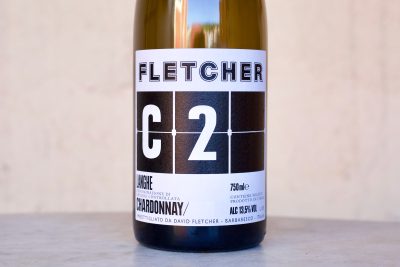Borgo Paglianetto
Photography and writing by Ted Vance.
Located sixty kilometers from the Adriatic Sea in the Verdicchio di Matelica DOC, Borgo Paglianetto is both in the heart of Italy’s Marche as well as in an area most famous for mountain-and-sea influenced, salty, minerally Verdicchio. Inside the unique north-to-south-running, land-locked Alta Valle dell’ Esino, Borgo Paglianetto began as a collaboration of five friends in 2008. They have nearly 30 hectares that were planted over twenty years ago (as of 2024), and they’ve been under organic certification since 2013. The straight-as-an arrow vine rows face mostly east, peak at 390 meters and gradually flow downhill to 330. The mother rock is Jurassic limestone from the same period as Burgundy’s Côte d’Or, and with similarly sticky, thick, grayish-white clay topsoil found in many of Burgundy’s best white wine vineyards. The results across the range are impressive, but none more than in the value delivered by the two entry-level Verdicchios: Terravignata and Petrara.
Borgo Paglianetto - 2023 Verdicchio, Terravignata
Out of stock
Vallelonga is the flagship of this dingy-sized operation. It is indeed a small cantina but mighty, like its appellation. What is most striking about Nebbiolo grown in the soil of Lessona is its subtle and equally substantial aromas that are unlike any expression I’ve experienced with this varietal. It hits all the markers expected from Nebbiolo (rose, tar, anise and great structure) but here they transcend the weight and power of the Langhe with an angelic rise of elegance from the glass—especially whenever Northern Piedmont’s maestro enologist, Cristiano Garella, is involved. A very well-respected wine writer once mistakenly lumped Lessona into the mix of all of northern Piedmont Nebbiolo wines as “a rather less pure form than a great Barolo.” This oversight is easy to make if a Lessona is tasted next to its local brethren, or to a Barolo where it’s like putting a ballerina in the ring with a boxer.
Famous Italian wine writers of the late 1800s and early 1900s considered Lessona wines the greatest reds in all of Italy, and in the right hands it can represent one of the most pure expressions of Nebbiolo. The weight and power of Nebbiolo from further south (in the Langhe) often overwhelms the senses when compared to Lessona’s hyper-detailed and intricately refined expression. Lessona’s volcanic soil, with its metal and mineral streak in the palate, is impossible to miss, and the grape is equally obvious. It could be the Chambolle-Musigny of Piedmont, and no one who knows and drinks (not only tastes) Burgundy would dare ding one because of its finesse and purity. Like Lessona, some of the greatest Chambolle-Musignys can get lost in the context of bigger wines and can be better served alone.
Fabio’s Coste della Sesia Nebbiolo grapes are entirely grown within the Lessona appellation, but due to an archaic technicality, it’s not labeled as such because the winery it’s made in sits only fifteen feet over the border of Lessona and primarily in Coste della Sesia appellation, so it can only be labeled as a Costa della Sesia; it’s obvious that a wine should be labeled by the origin of their grapes, not the location of the cellar it was crafted in. (I apologize for the repetition of this paragraph if you’ve read Fabio’s profile as well.)
The details: Fermentation in stainless steel for over three weeks, followed by aging in old 225 liter barrels for thirteen months. Fermentation is spontaneous and the use of sulfites is kept to a minimum—only 30ppm at bottling, which is near half the average for handcrafted, boutique fine wine. The vines are a mix of young and old, with the average close to twenty-five years.






